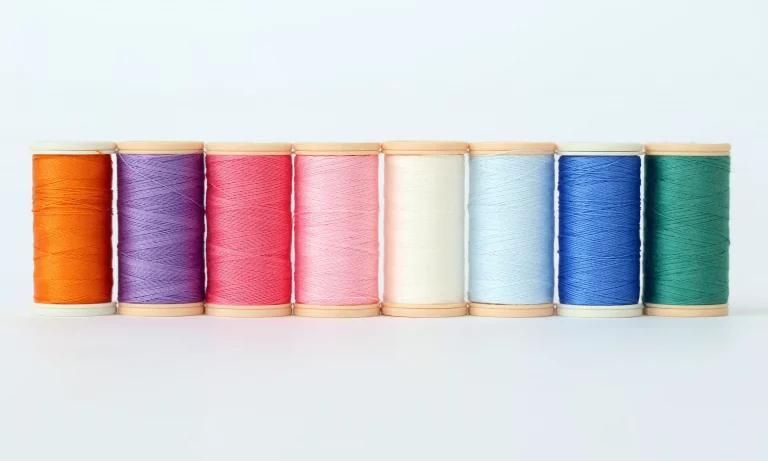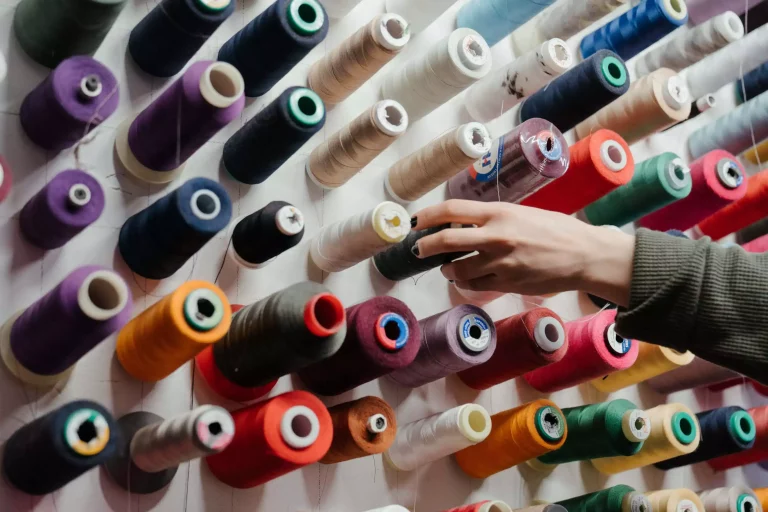Textile yarn is one of the most important components in the textile industry. It is also an integral part of apparel quality control. In order to ensure the quality of yarn, a yarn inspection is necessary. It is used to detect quality issues with the yarns so that they can be corrected before the yarn is used to make fabric.
A yarn test can be performed manually by independent 3rd party quality control inspection companies or with the aid of automated yarn inspection machines. In this blog post, we will focus on manual yarn inspection and shed some light on important factors to consider while performing yarn testing.

4 Important factors to consider when performing a yarn inspection
There are many factors that need to be considered when inspecting yarn, such as the yarn count, yarn color, yarn texture, and yarn strength.
Yarn Count:
The yarn count is the most important factor when inspecting yarn. The yarn count refers to the number of yarns per unit length. It is expressed in terms of tex or denier. A tex is a unit of measure for linear mass density, and a denier is a unit of measure for linear mass density of fibers. The higher the yarn count, the higher the quality of the yarn.
Yarn Color
The yarn color is also important when inspecting yarn. The color can affect the appearance and durability of the textile product. Yarn with different colors can be blended to create different colors in the final product.
Yarn Texture
The texture of yarn can also affect the appearance and durability of textile products. Yarn with a rough texture can make products look less polished.
Yarn strength
The strength of the yarn is also important when inspecting yarn. Yarn with low strength can easily break and cause flaws in textile products.
Types of yarn defects

There are two main types of defects: Surface defects and internal defects.
Surface Defects:
Surface defects are visible on the yarn surface and can be caused by impurities in the raw materials, incorrect spinning process, or damage during yarn handling.
Internal Defects:
Internal defects are not visible on the yarn surface but can be identified by testing the yarn strength or by looking at the yarn under a microscope. Internal defects are usually caused by problems in the spinning process.
Common yarn surface defects
- Dust particles: These are small pieces of dirt or other materials that become trapped on the yarn during handling.
- Neps: Neps are small knots of yarn that form when two or more fibers become tangled together during spinning. During weaving or knitting, these kinds of surface defects can occur.
- Trims: Trims are pieces of yarn that have been cut off during spinning or handling. Trims can cause the yarn breaks while weaving or knitting.
- Slubs: Slubs are thick and thin sections of yarn that form during spinning.
Common yarn internal defects
- Grades: Grades are yarns of different thicknesses that are mixed together during spinning.
- Knots: Knots are loops of yarn that form when two yarn ends are knotted together.
- Overtwists/Undertwists: Overtwists are yarns that have been twisted too tightly during spinning, whereas undertwists are yarns that have been twisted too loosely during spinning. Both of them can lead to yarn breakage.
In addition to that, there are a few more types of quality issues with yarns that can occur during the manufacturing process, such as;
- Yarn breaks
- Yarn slubs
- Yarn knots
- Yarn pilling
- Thick and thin yarn
- Foreign matter
- Length irregularities
- Incorrect yarn count
How to correct yarn defects after yarn inspection
Once the defects have been identified, the next step is to correct them. This can be done in a number of ways, depending on the type of defect. For example, if there is a yarn break:
- Remove the broken yarn and replace it with a new length of yarn
- Splice the broken yarn together using a special knotting technique
- Use a yarn joiner to attach the two ends of the yarn together
If the yarn is too tightly twisted:
- Untwist the yarn using a yarn twister
If the yarn is too loosely twisted:
- Twist the yarn using a yarn twister
How Tetra Inspection can help you with yarn inspection
If you need a yarn testing solution that is reliable and accurate, then Tetra Inspection is a perfect choice for you. We have a network of highly qualified quality controllers who are trained to detect even the smallest defects in yarn, so you can be confident that your yarn meets strict quality requirements and specifications. We also offer a variety of yarn inspection services to ensure that your yarn is strong and durable and your textile product quality is consistent.
For more information on how Tetra Inspection can help you with yarn inspection, please email us at sales@tetrainspection.com or contact us today.


